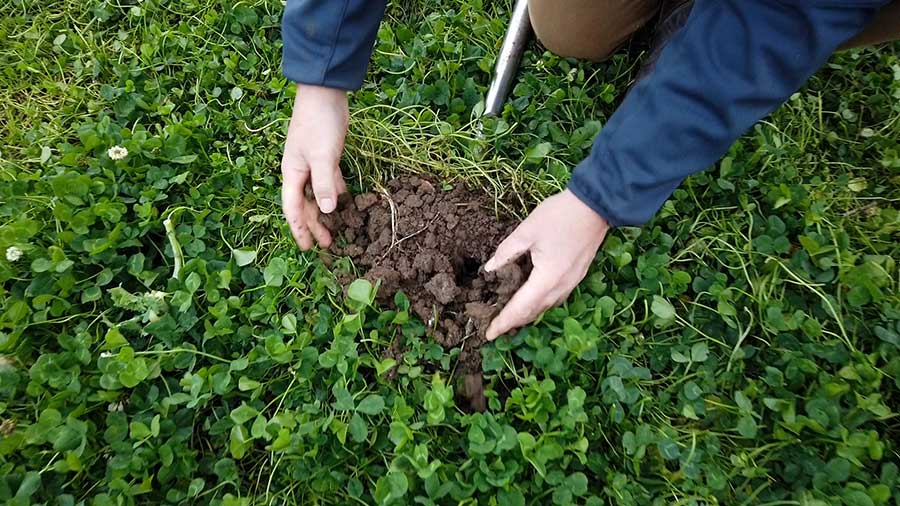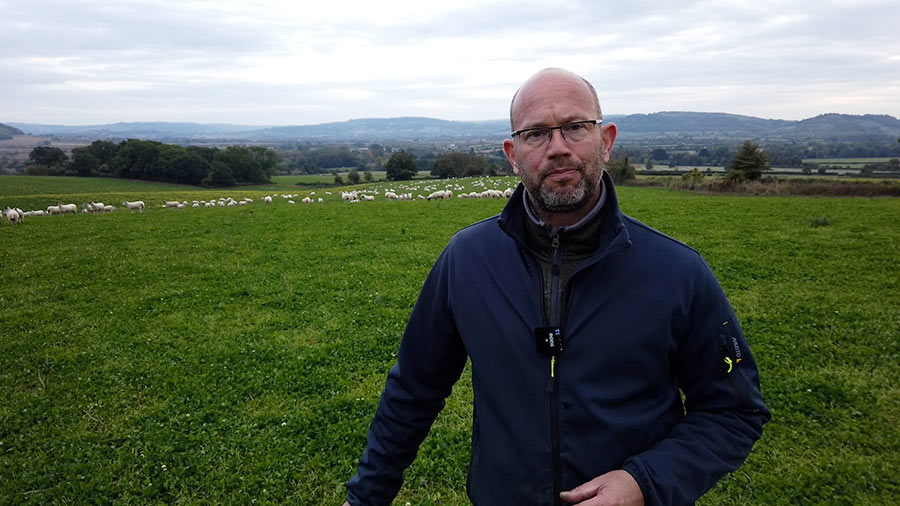Video: Grower undersows wheat with clover to cut fertiliser costs
 Jake Freestone's clover crop improves the soil © MAG/Philip Case
Jake Freestone's clover crop improves the soil © MAG/Philip Case A regenerative farmer is experimenting with white clover understories to reduce his nitrogen fertiliser bills and provide additional grazing for the ewe flock.
The price of natural gas, a key component of nitrogen-based fertilisers, has risen sharply in recent months due to tight supply, rising gas prices and some panic-buying.
Ammonium nitrate is now priced between £600/t and £690/t.
To reduce his reliance on artificial nitrogen fertiliser, Jake Freestone, farm manager at 1,590ha Overbury Enterprises on the Gloucestershire/Worcestershire border, has planted an understory of white clover in three fields, covering 28ha of land.
See also: Is undersowing cereal crops with clover the next big thing?
Watch the video and read the rest of the report below.
He hopes the clover understories will remain intact through the rotation, help to suppress weeds and release nitrogen to the following wheat crop.
Once the wheat is harvested next autumn, Mr Freestone will have an instant cover crop which his ewe flock of North Country Mules will be able to graze straight away.
“We have a lot of permanent pasture at the farm and it isn’t great quality at that time of year, when the ewes are often in need of a bit more higher-quality feed, more protein feed,” said Mr Freestone.
This autumn, the sheep will graze the white clover understory for about five weeks to improve their body condition before they are put to the tup around mid-November.

Jake Freestone © MAG/Philip Case
Meanwhile, a Cross Slot disc drill is being used to direct drill wheat into the clover cover crop.
“Our Cross Slot disc drill works really well across all our fields, on all soil types. It copes with stones, all sorts of things,” explained Mr Freestone.
“Any disc drill would work in this scenario. But a tine drill would rake it all up and you would get bung-ups. You need the disc to slice through the residue (the clover), to slice into the ground to pop the seed in.”
Mr Freestone said white clover understories were an option for any mixed farmer looking to save money on their N fertiliser bills. They could also provide summer feed for cattle after the wheat crop is harvested.
Contractor option
Growers who don’t have access to their own drill could consider hiring a contractor to do the work, he added.
Variable-rate nitrogen applications will also be used on the farm to reduce N fertiliser spend and improve efficiency.
Longer term, Mr Freestone said carbon capture and storage through cover crops could provide new income streams through natural capital market payments from companies wanting to buy carbon stored in fields to offset their emissions.
“The market will decide whether we push our wheat crop to get 11t/ha or aim for a lower yield of 9t/ha and make up the difference with carbon and biodiversity payments,” he added.
“The challenge for farmers in the future is how they put this information into a spreadsheet when they are making their cropping plans.”

